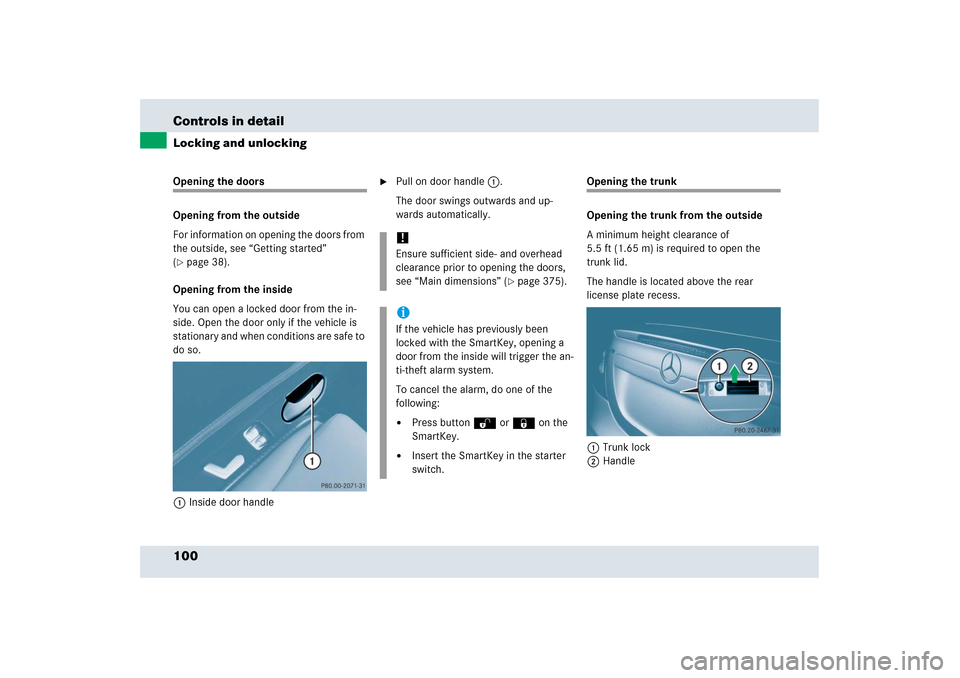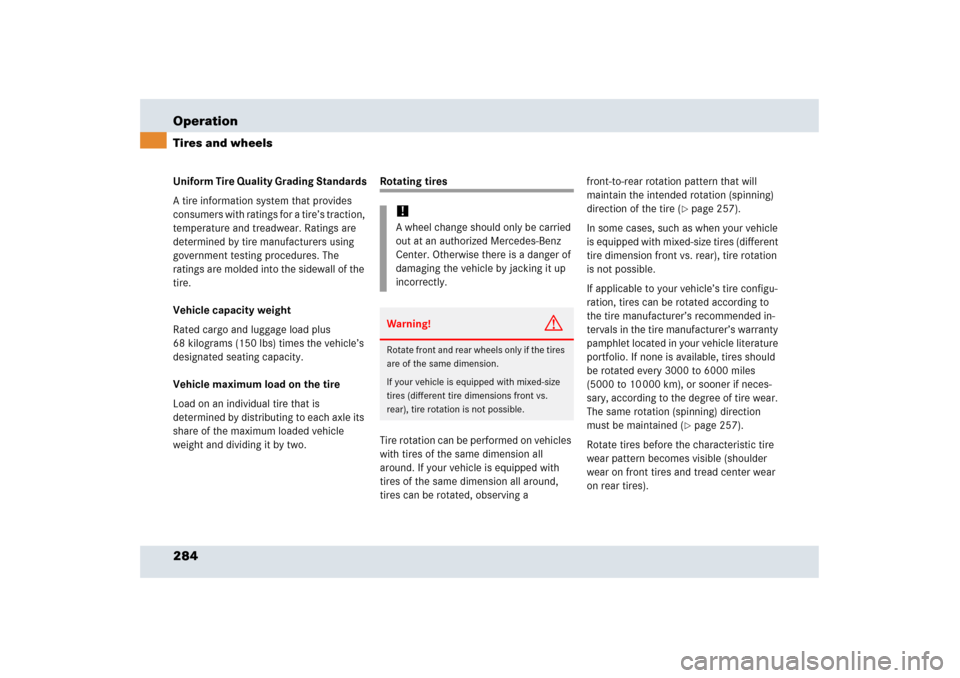Page 12 of 409

Contents
Flat tire .............................................. 351
Preparing the vehicle ................... 351
Sealing tires with TIREFIT kit ........ 351
Batteries ............................................ 356
Charging the batteries ................. 358
Towing the vehicle ............................. 360
Installing/reinstalling
towing eye bolt ............................ 362
Points to bear in mind .................. 362
Transporting the vehicle............... 362
Fuses ................................................. 363
Technical data.................................. 364
Spare parts service............................. 366
Warranty coverage ............................. 367
Loss of Service and Warranty
Information Booklet ...................... 367
Identification labels ............................ 368
Engine number.............................. 368
Layout of poly-V-belt drive .................. 369
Engine ................................................ 370
Rims and tires .................................... 371
Mixed size tires ............................. 372
Winter tires* ................................. 373
Electrical system ................................ 374
Main dimensions ................................ 375
Weights .............................................. 376Fuels, coolants, lubricants, etc. .......... 377
Capacities ..................................... 377
Engine oils .................................... 378
Engine oil additives ....................... 378
Air conditioning refrigerant ........... 378
Brake fluid .................................... 379
Premium unleaded gasoline.......... 379
Fuel requirements......................... 380
Gasoline additives......................... 380
Coolants ....................................... 381
Windshield and headlamp
washer system.............................. 383
Technical terms............................... 384Index................................................. 390
Page 40 of 409
39 Getting started
Unlocking
�
Press the front part of the door
handle5.
The door swings outwards and up-
wards automatically.
�
Get in the vehicle and insert the
SmartKey in the starter switch.
You will find further information in the
“Controls in detail” section (
�page 96).
Warning!
G
Always stand to the rear of the door before
opening it, otherwise the opening action
may cause injury. Outside temperature may
affect door opening speed.!Ensure sufficient side- and overhead
clearance prior to opening the doors,
see “Main dimensions” (
�page 375).
Warning!
G
When leaving the vehicle, always remove the
SmartKey from the starter switch, take it
with you, and lock the vehicle. Do not leave
children unattended in the vehicle, or with
access to an unlocked vehicle. Unsuper-
vised use of vehicle equipment may cause
an accident and/or serious personal injury.
Page 101 of 409

100 Controls in detailLocking and unlockingOpening the doors
Opening from the outside
For information on opening the doors from
the outside, see “Getting started”
(�page 38).
Opening from the inside
You can open a locked door from the in-
side. Open the door only if the vehicle is
stationary and when conditions are safe to
do so.
1Inside door handle
�
Pull on door handle1.
The door swings outwards and up-
wards automatically.
Opening the trunk
Opening the trunk from the outside
A minimum height clearance of
5.5 ft (1.65 m) is required to open the
trunk lid.
The handle is located above the rear
license plate recess.
1Trunk lock
2Handle
!Ensure sufficient side- and overhead
clearance prior to opening the doors,
see “Main dimensions” (
�page 375).
iIf the vehicle has previously been
locked with the SmartKey, opening a
door from the inside will trigger the an-
ti-theft alarm system.
To cancel the alarm, do one of the
following:�
Press buttonŒ or‹ on the
SmartKey.
�
Insert the SmartKey in the starter
switch.
Page 285 of 409

284 OperationTires and wheelsUniform Tire Quality Grading Standards
A tire information system that provides
consumers with ratings for a tire’s traction,
temperature and treadwear. Ratings are
determined by tire manufacturers using
government testing procedures. The
ratings are molded into the sidewall of the
tire.
Vehicle capacity weight
Rated cargo and luggage load plus
68 kilograms (150 lbs) times the vehicle’s
designated seating capacity.
Vehicle maximum load on the tire
Load on an individual tire that is
determined by distributing to each axle its
share of the maximum loaded vehicle
weight and dividing it by two.
Rotating tires
Tire rotation can be performed on vehicles
with tires of the same dimension all
around. If your vehicle is equipped with
tires of the same dimension all around,
tires can be rotated, observing a front-to-rear rotation pattern that will
maintain the intended rotation (spinning)
direction of the tire (
�page 257).
In some cases, such as when your vehicle
is equipped with mixed-size tires (different
tire dimension front vs. rear), tire rotation
is not possible.
If applicable to your vehicle’s tire configu-
ration, tires can be rotated according to
the tire manufacturer’s recommended in-
tervals in the tire manufacturer’s warranty
pamphlet located in your vehicle literature
portfolio. If none is available, tires should
be rotated every 3000 to 6000 miles
(5000 to 10 000 km), or sooner if neces-
sary, according to the degree of tire wear.
The same rotation (spinning) direction
must be maintained (�page 257).
Rotate tires before the characteristic tire
wear pattern becomes visible (shoulder
wear on front tires and tread center wear
on rear tires).
!A wheel change should only be carried
out at an authorized Mercedes-Benz
Center. Otherwise there is a danger of
damaging the vehicle by jacking it up
incorrectly.Warning!
G
Rotate front and rear wheels only if the tires
are of the same dimension.
If your vehicle is equipped with mixed-size
tires (different tire dimensions front vs.
rear), tire rotation is not possible.
Page 365 of 409
Technical dataSpare parts service
Warranty coverage
Identification labels
Layout of poly-V-belt drive
Engine
Rims and tires
Electrical system
Main dimensions
Weights
Fuels, coolants, lubricants, etc.
Page 376 of 409
375 Technical data
Main dimensions
�Main dimensions
Overall vehicle length
183.3 in (4656 mm)
Overall vehicle width
75.1 in (1908 mm)
Overall vehicle width (doors open - widest point)
111.7 in (2838 mm)
Overall vehicle height
49.6 in (1261 mm)
Overall vehicle height (doors open)
80.5 in (2045 mm)
Wheelbase
106.3 in (2700 mm)
Track, front
64.5 in (1638 mm)
Track, rear
61.8 in (1569 mm)
Page 395 of 409

394 IndexControl system menus 120
AUDIO menu 123
Settings 126
Standard display menu 122
TEL 139
Trip computer 137
Vehicle status message memory 124
Control system submenus 121, 127
Instrument cluster 129
Lighting 132
Time 131
Vehicle 136
Controller Area Network see CAN
Coolant 242, 250, 381
Anticorrosion/antifreeze mixing ratio
and quantity 382
Capacities 377
Checking coolant level 242, 250
Messages in the multifunction
display 323
Temperature 240
Temperature gauge 114
Warning lamp 29, 302
Courtesy lighting 112Cruise control 27, 197, 386
Messages in the multifunction
display 309
Curb weight 281
Customer Assistance Center see CAC
D
Daytime running lamp mode 107
Setting 132
Deep water see Standing water
Defogging windshield 188
Defrosting, Front 188
Defrosting, Rear 181
Delayed switch-off
Exterior lamps 134
Interior lighting 135
Department of Transportation see DOT
Differential
Message in the multifunction
display 326
Difficulties
While driving 56
With starting 50
Digital clock see Clock
Digital speedometer 123
Dimensions, Vehicle 375
Direction of rotation, Tires 257Display elements, Audio system 144
Displays
Digital speedometer 123
Maintenance service indicator 289
Multifunction display 117
Outside temperature 115, 129
Showing vehicle status
messages 125
Symbol messages 315
Text messages 309
Vehicle status messages 124, 307
Distance to empty (Range) 139
Door
Control panel 34
Entry lamps 111
Handle, Inside 34
Handle, Outside 38
Locking/unlocking, SmartKey 38, 96
Message in the multifunction
display 327
Opening from inside/outside 38,
100
Remote door unlock, Tele Aid 215
Unlocking in an emergency 345
DOT 282
Drinking and driving 231
Page 404 of 409

403 Index
Sun visors 180
Supplement Restraint System see SRS
Symbols used in this Operator’s
Manual 19
T
Tachometer 29
Overspeed range 115
Tail lamps
Messages in the multifunction
display 333
Replacing bulbs 348
Technical data 364
Air conditioning refrigerant 378
Brake fluid 379
Coolants 381
Electrical system 374
Engine 370
Engine oil additives 378
Engine oils 378
Fuel requirements 380
Fuels, coolants, lubricants etc. 377
Gasoline additives 380
Main dimensions 375
Poly-V-belt 369
Premium unleaded gasoline 379
Rims and tires 371Weights 376
Windshield and headlamp washer
system 377, 383
Tele Aid 208, 389
Call priority 214
Emergency calls 209
Hands-free microphone 33
Information 213
Initiating an emergency call
manually 211
Messages in the multifunction
display 334
Remote door unlock 215
Roadside Assistance 211
SOS button 211
Stolen Vehicle Recovery
services 215
System self-check 209
Telephone 203
Answering a call 140
Dialing 141
Ending a call 141
Hands-free microphone 33
Loading phone book 141
Messages in the multifunction
display 329Operation 139, 160
Redialing 142
Signal strength 140
Storage location 201
Temperature
Interior temperature 185
Outside temperature 115
Sensor, Interior 33
Sensor, outside 116
Setting display unit 129
Tether attachment points, see Children in
the vehicle
Tightening torque, Wheel bolts 285, 286,
389
Time 131
TIN 276, 283
Tire and Loading Information 258
Placard 258
Terminology 281
Tire Identification Number see TIN
Tire inflation pressure
Checking
Checking electronically 267
Checking manually 266
Setting units 137